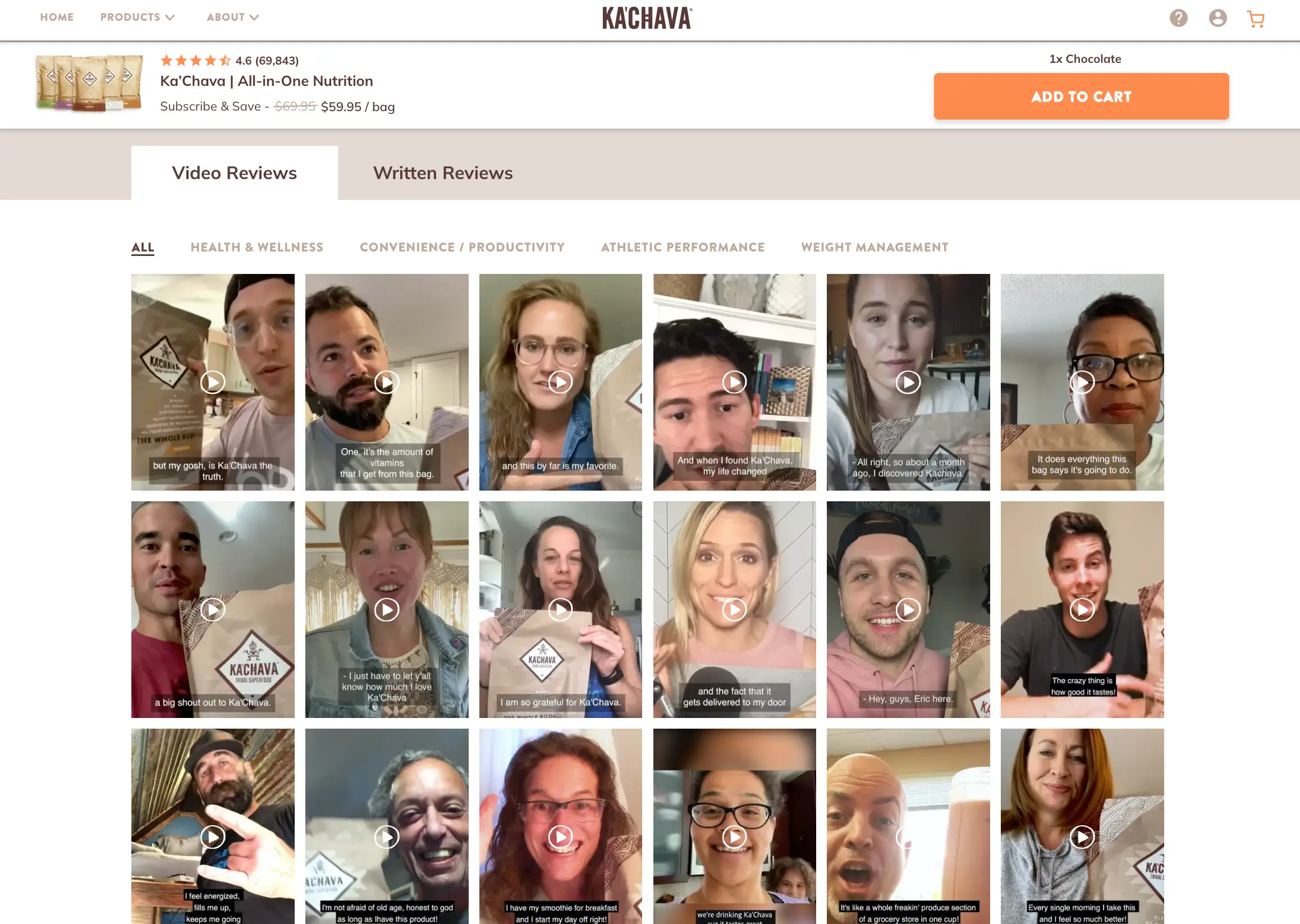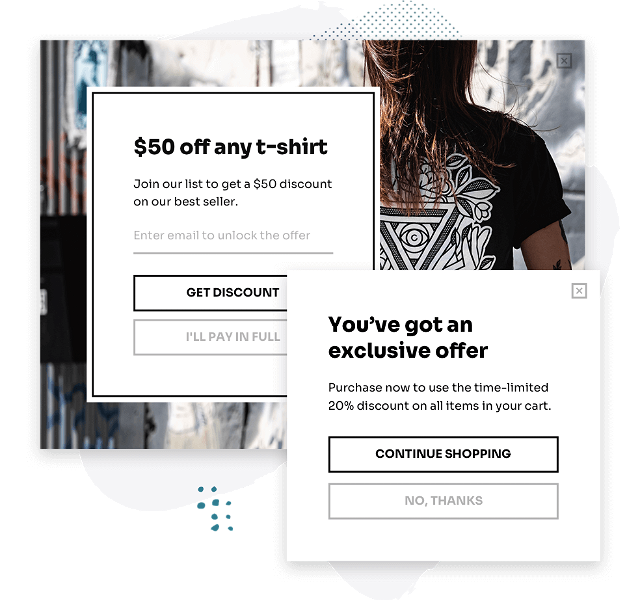Suffering from a flagging eCommerce conversion rates? Customer acquisition costs going through the roof? Fear not, you’re in the right place. In this extensive guide, we’ll take an in-depth look some tried and test strategies on how to increase conversion rate in eCommerce.
We’ll start off by looking at some practical, actionable tips and techniques. From optimizing site speed to implementing on-page live chat (and everything in between), we’ve got you covered.
What Is A Good eCommerce Conversion Rate?
The average conversion rates for eCommerce typically range between 2.5% to 3%, though this can greatly differ. An exhaustive study conducted by LittleData on Shopify stores found that the mean conversion rate stands at 1.4%. If your conversion rate is under 0.5%, there’s certainly potential for growth. On the other hand, a conversion rate above 3.3% signifies you’re excelling – placing you in the top 20% of all Shopify stores in relation to conversion rate.
How to Increase Your Conversion Rate
With customer acquisition algorithms ever-changing and the highest customer acquisition costs in history now is the time to invest in UX and CX. Use this playbook covering technical wins like site speed along with bespoke touches fitting your community. Conversion optimization never stops, so build processes to continuously test new ideas at scale.
Step 1 Check your site speed and fix slow pages
- Use Google PageSpeed Insights to generate speed reports
- Check Time to Interactive and Time to First Byte metrics
- Target under 3 seconds load time, especially on product pages
- Enable caching plugins like WP Rocket to serve pages faster
- Compress images with tools like TinyPNG
- Minify HTML, CSS and JS files with Grunt or Gulp
Expert Tip
Prioritize optimizing page speed for product pages over less important pages.
Example
A blimpp client optimized image loading on product pages first, cutting 1.3 secs off page load time. This lifted conversions by 14% before they addressed other parts of the site.
Step 2 Simplify the checkout user flow
- Map the steps users take from cart to confirmation
- Reduce steps below 5 for desktop, 3 for mobile
- Remove extra form fields not vital to checkout
- Allow guest checkout without requiring account creation
- Enable autofill support for address and payment details
- Allow shoppers to save details with an email for faster future checkouts
Expert Tip
Despite shifting trends, people still check out more often on desktops than mobile, so optimize checkout on desktop first before enhancing the mobile experience.
Example
A skincare brand focused first on reducing desktop checkout fields from 6 to 4 steps before updating mobile. Though mobile revenue grew 15%, desktop revenue increased by 22%.
Step 3 Make shipping costs and policies transparent

- Display shipping rates per item before adding to cart
- Show estimated shipping costs on cart and checkout pages, no surprises
- Offer free shipping or provide codes to waive charges above minimum order values
- Clearly highlight shipping timelines for delivery on website
Expert Tip
Consider offering free shipping on returns to reduce buying hesitation.
Example
By introducing a “Free Returns” policy alongside their standard 30-day returns window, an cosmetics store saw order frequency increase by 9%.
Step 4 Display trust symbols and assurances
- Add badges for payment processors (Visa, Mastercard), SSL certificates, site security tools
- Display certifications like BBB listing to showcase business reputation
- Embed customer testimonials and case studies
- Ensure company contact info is easy to find
Expert Tip
Curate video testimonials to showcase instead of just images and text. Build a wall of social proof on product pages, to maximize visibililty of reviews.
Example
An outdoor retailer hosted video success stories from real customer camping and hiking trips. This authentic social proof helped increase conversion rate by 6.4%.
Step 5 Set up an automated abandoned cart recovery process

- Install plugins like CartHook to capture and tag abandoned carts
- Create email segments to target customers who left carts
- Send timed and personalized promo codes to nudge completing purchase
- Remarket with ads showcasing cart contents across networks
Expert Tip
Time your abandoned cart reminder emails to go out within 1-3 days after.
Example
A haircare brand configured their cart abandonment emails to go out 2 days after. The 2 day email recovered 62% more abandoned checkouts vs. 5 day email.
Step 6 A/B test landing pages frequently
- Use tools like VWO to visually build and split test pages
- Test layout, headlines, testimonials, savings messaging
- Rely on statistical significance to determine winning variations
- Iteratively test to further optimize top-performing pages
Expert Tip
When testing, avoid changing too many variables at once between page versions.
Example
A beauty website saw inconclusive results when testing a page with 3 different layouts, images and captions. When they focused on just swapping one image, the data clearly showed which resonated more.
Understanding eCommerce Conversion Rates
The conversion rate serves as a performance metric that indicates the percentage of users who have finalized a purchase.
In other words, these are the users who have positively responded to our CTA, proceeded to our checkout, and completed the payment for their order. To illustrate, an eCommerce platform with a conversion rate of 1% signifies that out of every 100 users, one makes a purchase.
The calculation for the conversion rate is quite straightforward. It involves dividing the number of purchases by the total number of visitors to the website. The resulting figure is then multiplied by 100 to convert it into a percentage. This percentage represents the conversion rate.
The higher the conversion rate, the more successful and eCommerce brand is likely to be in realizing revenue from it’s paid and organic marketing campaigns.
Importance Of Conversion Rates in eCommerce
The success of an eCommerce business heavily relies on its conversion rates as they play a role in generating revenue. Higher conversion rates mean that you are more efficiently extracting value from your website visitors.
By prioritizing the improvement of your conversion rates you can boost your revenue without necessarily increasing your marketing costs. This is why focusing on conversion rate optimization is such a crucial aspect of eCommerce success.
The goal of Conversion Rate Optimization (CRO) strategies is for an eCommerce store are to achieve a higher percentage of completed purchases. In other words, a larger number of users who visit your eCommerce site should end up making a purchase.
There are several elements that can be adjusted to achieve this goal, which we’ll dig into later on.
What’s a Good Conversion Rate for eCommerce?
According to BigCommerce, typical eCommerce conversion rates are generally around 2.5-3% – although this can vary greatly. The analytics application LittleData, conducted an exhaustive analysis of conversion rates among Shopify stores and discovered that the average conversion rate for Shopify stores stands at 1.4%.
If your conversion rate is less than 0.5%, there’s definitely room for improvement. However, if your conversion rate is over 3.3%, you’re doing exceptionally well – you’re in the top 20% of all Shopify stores in terms of conversion rate.
The conversion rates of eCommerce businesses can vary significantly depending on the industry they belong to. According to Adobe, here are the average conversion rates for six major eCommerce sectors:
Fashion and apparel: 2.7%
Health and beauty: 3.3%
Entertainment: 2.5%
Household goods: 2.1%
Electronics: 1.9%
Food and beverage: 4.6%
Food and beverage, along with health and beauty, were the industries with the highest conversion rates in eCommerce.
This could be attributed to the fact that these products are usually cheaper than items like household goods or electronics, making it easier for customers to make a purchase.
Optimizing Your eCommerce Website For More Conversions
Ok, so you know the ins and outs of eCommerce conversion rate – the next step is on how to improve it. In this next section, we’ll take you through some tried and tested methods covering everything from on-site optimization to running continuous A/B testing.
Enhancing Site Speed
Website performance significantly impacts conversion rates. Research consistently indicates that a faster page load speed correlates with improved conversion rates. Simply put, the faster a webpage loads, the more likely a user is to engage with the intended action on that page.
The gap in e-commerce conversion rates between super speedy eCommerce site and those that are just averagely fast is quite significant. According to Portent, a website that loads in just 1 second can boast an eCommerce conversion rate that is 2.5 times higher than a site that takes 5 seconds to load.
To maximize site speed consider the following:
Compressing Images: Large, high-resolution images can slow down your site significantly. Compress images without losing quality to ensure faster page loading times.
Minimize HTTP Requests: Too many HTTP requests can slow down your site. Combine files, streamline the number of elements on your page, and use CSS instead of images whenever possible.
Enable Browser Caching: When you enable browser caching, the elements of your site are stored in the user’s cache so they don’t have to be re-loaded every time the user visits your site, resulting in a faster load time.
Minify Resources: Minifying your CSS, JavaScript, and HTML can help increase your site speed by reducing the amount of code that needs to be downloaded by the browser.
Use a Content Delivery Network (CDN): A CDN can help speed up your site by storing copies of your site at different points around the world. This means that users can access your site from a server that’s closer to them, resulting in faster load times.
Prioritize Above-the-Fold Content: Prioritizing the loading of the content that appears “above the fold” can improve the perceived speed of your site. This means that users will see content faster, even if the rest of your page takes a little bit longer to load.
Site Search
Integrating an internal search function on your website not only simplifies the user’s search process but can also have a positive effect on your profits.
Research conducted by eConsultancy suggests that users who utilize on-site search are 1.8 percent more likely to convert compared to other users.
According to a comprehensive report by Forrester Research, focusing on “spearfishers” – users who visit a site with a specific product in mind – can significantly boost conversions. Their research found that a whopping 43% of visitors head straight for the search box upon landing on a site, and these searchers are two to three times more likely to convert.
This underscores the importance of making it as easy as possible for users to initiate a search.
Resources like SearchSpring can be used to enhance your on-site search experience. It offers functionalities such as auto-complete, product recommendations, and even interactive product quizzes, to help users find what they’re looking for with the minimum of fuss.
Improving Product Images
For a thriving ecommerce brands, your product pages need to be conversion hotspots. Getting the balance right between depth of content and page speed is key here, particularly across mobile-versions of your product pages.
And it might seem obvious, but it’s surprising how many sites attempt to market products with subpar images.
Take a look at MADE, they use stunning images that really bring their products to life:

Another great one is Best Made Company:

Take a leaf out of their book: choose a default image that is displayed in full size and provide clickable thumbnails (which display larger images when clicked on).
Another tip is to offer a zoom and 360° rotation features, allowing for close-ups from different angles which may be particularly useful if your product has intricate details.
DueMaternity.com, an online retailer catering to expectant mothers and new moms, saw a 27% surge in their conversion rate when they incorporated 360° rotating images. Previously, they only displayed traditional 2D images, such as a model showcasing a maternity dress from the front and back.
Implementing Retargeting Campaigns
Lets be honest not everyone who visits your website will immediately make a purchase. In most cases people are just casually browsing, comparing prices, looking for product details or simply exploring without any particular intention.
This is where retargeting comes into play. Instead of trying to reel in brand new customers, retargeting focuses on those who have already visited your site. These people are likely to be more familiar with your brand, and if you can figure out what piqued their interest in the first place, you can tailor your approach to hook them in.
Retargeting can be as straightforward as reminding customers that you’re still around and that the product they were eyeing up is still available. Or, it might involve tempting them back with a juicy deal. But the end game is always the same — to convert those who were interested but didn’t make a purchase.
According to AdRoll, eCommerce brands can increase their chances of retargeting effectively by:
Segment Your Audience by Behavior: Breaking down audiences based on their actions on your site paves the way for more personalized ad copy and targeted campaigns. This can be achieved through tracking URLs, pinpointing shoppers at different stages of the checkout process, or classifying customers based on their shopping history with your site.
Create Personalized Ads: Use the information gathered about each unique segment’s interests and behaviors to craft personalized retargeting ads. This will make the ads more relevant and effective.
Cross-Sell to Existing Customers: Retargeting to recommend items that supplement previous purchases or resemble products the customer has shown an interest in. This method aids in maintaining brand relevance and stimulates repeat purchases.
Leverage Email Retargeting: Supplement your retargeting efforts by incorporating email in to the mix. Unlike retargeting campaigns, which often need minimum retargeting pools to become active, email can reach a segment of one, for an ultra-personalized message.
Implementing retargeting is a vital component of enhancing overall conversion rates, because it can help to solidify visitor intent over time. By enabling retargeting campaigns across ad platforms like Google and Meta, eCommerce brands can drive greater relevance across key customer and engager segments.
Utilizing Live Chat
Live chat in eCommerce is usually a pop-up or a clickable window on your website that provides immediate assistance to customers when they have questions about product, shipping, or other customer service related concerns.
Especially for higher AOV brands, live chat can be helpful in enhancing the customer experience, as it can make your website visitors feel more confident about their would-be purchases.
Research from Talktative shows that on average, brands achieve a 10% increase in average order value when customers engage in live chat before making a purchase, in addition to a 20% increase in conversion rates.
Intercom provides an eCommerce live chat solution that can quickly answer those repetitive questions your human chat agents encounter on a regular basis. By using saved responses, you can enhance conversion rates and reduce shopping cart abandonment, while also saving your support team valuable time.
Intercom’s also offers over 300 integrations, connecting to the tools your support, sales, and marketing teams already use across your eCommerce tech stack.
Showcasing Social Proof
When product pages feature images from social media and customer testimonials, visitors are six times more likely to make a purchase, according to Mayple.
Social proof serves as an influential tool in boosting eCommerce conversion rate, influencing consumer behavior by showcasing positive experiences other customers have had with your brand.
Here are a couple of ways to make this happen;
Show the number of people who have bought your product.
Highlight customer reviews, ratings and testimonials on your product and category pages.
Include user generated content, like customer photos or videos reviewing the product.
Showcase any awards or press coverage your product has received.
Supplement brand Ka’Chava utilizes social proof on its product pages with a video wall of user-generated reviews. This approach allows potential customers to see real, authentic feedback from customers who have already tried and tested the product, not only adding credibility to the product but also gives a more personal touch to the product testimonials, making them more relatable and engaging.

Utilize Exit Intent
Exit-intent technology is a tool that senses when a user is about to navigate away from a website and triggers a specific message or offer.
This technology can significantly diminish cart abandonment rates and boost conversions by capturing the users’ attention at the critical juncture when they are on the brink of leaving.

Even if you’re familiar with the technology, you might be curious why exit-intent popups are so effective at improving your eCommerce conversion rate. Consider the reasons why potential customers might decide to leave your website, such as:
The price is higher than they anticipated.
They’re not sure if the content or product is what they really want.
They’re not feeling a sense of urgency to act now.
Discount codes and countdown timers to encourage shoppers to complete their purchase.
Content recommendations for help new visitors find what they’re looking for.
Upsell and cross-sell offers to tempt bargain hunters.
Lead magnets to turn casual browsers into email subscribers.
Information that addresses hesitations about shipping costs and timing, product questions, and more.
To maximize the effectiveness of your exit intent popups, avoid creating generic ones. Tailoring them to your audience can make a world of difference, which is why personalization matters. When designing a well-constructed popup, consider the below stats (courtesy of GetSiteControl):
Mobile popups engage users 42.04% more than desktop ones.
Using images can boost click-through rates by up to 28.69%.
Including opt-out buttons can enhance popup click-through rates by 14.34%.
Utilizing countdown timers can yield 112.93% more conversions.
Testing & Analyzing Conversion Rate Strategies
Having a set of conversion tactics in place is just part of the puzzle when it comes to Conversion Rate Optimization. You still need to sucessfully execute these strategies and keep in mind that Conversion Rate Optimization isn’t a one and done job.
Instead it’s a process that demands continuous monitoring, testing and fine tuning.
Implementing A/B Testing
A/B testing is a technique where two versions of a webpage are pitted against each other to identify which one yields better performance. This process involves presenting two variations to users randomly and employing statistical analysis to figure out which version is more effective for a specified conversion objective.
A/B tests can take many forms. Here are four typical examples of A/B tests you might encounter when looking at how to improve on eCommerce conversion rate.
Navigation A/B Test: For instance, can users navigate your site more effectively and reach the checkout page if the menu is displayed at the top level instead of being hidden in a drop-down menu? Alternatively, you might want to test whether a “tag & filter” system (similar to Amazon’s filtering feature) makes it easier for customers to find their desired product compared to a traditional navigation system.
Product Detail Page A/B Test: This type of test focuses on rearranging elements of the product page to drive conversion rate improvements. For example, featuring more informative content towards the top of the page to impact the rate at which items are added to the cart. Alternatively, you experimenting with different product titles, images, or stock status messages.
Checkout Process A/B Test: Ensuring a seamless checkout process is vital for your customers to finalize their purchases, and that’s where A/B testing comes into play. For example, a test of this nature can help you decide whether a multi-page checkout or a single-page checkout yields better conversion rate. You might also want to experiment with consolidating several minor steps within the checkout process or using breadcrumb navigation to guide your customers through the checkout steps.
When it comes to A/B testing, there are several essential tools you might consider. The most widely used are Optimizely and VWO. Both platforms offer comprehensive A/B testing capabilities, including easy test deployment, result analysis, and website heatmaps among other features.
Analyzing Data For Continuous Improvement
By keeping track of data from website and marketing activities, we can pinpoint areas for improvement as well as maximize our eCommerce conversion rates.
Taking advantage of platforms like Google Analytics or heatmapping software such as Microsoft Clarity in order to gain knowledge on customer behavior and page performance.
Google Analytics offers insights into the actions of people visiting websites. It enables you to monitor metrics such as bounce rate, session duration pages visited per session and many others. These metrics can provide information about the strengths and weaknesses of your website.
Microsoft Clarity is an analytics tool that provides insights into user behavior on your website. It offers features like session replays and heatmaps to help you gain an understanding of how users interact with your site. With session replays you can observe what actions users took while browsing your site. This valuable information can assist in identifying any obstacles that may hinder conversion.
Heatmaps, another feature of Microsoft Clarity, visually represent where users clicked on your site, how far they scrolled, and what they ignored. This can give you a better understanding of what areas of your website are attracting the most attention and what areas are being ignored.
Summary
By optimizing your eCommerce website and implementing effective conversion rate strategies, you can significantly boost your revenue performance. This involves making your site user-friendly, minimizing navigational friction, and addressing pre-purchase concerns.

